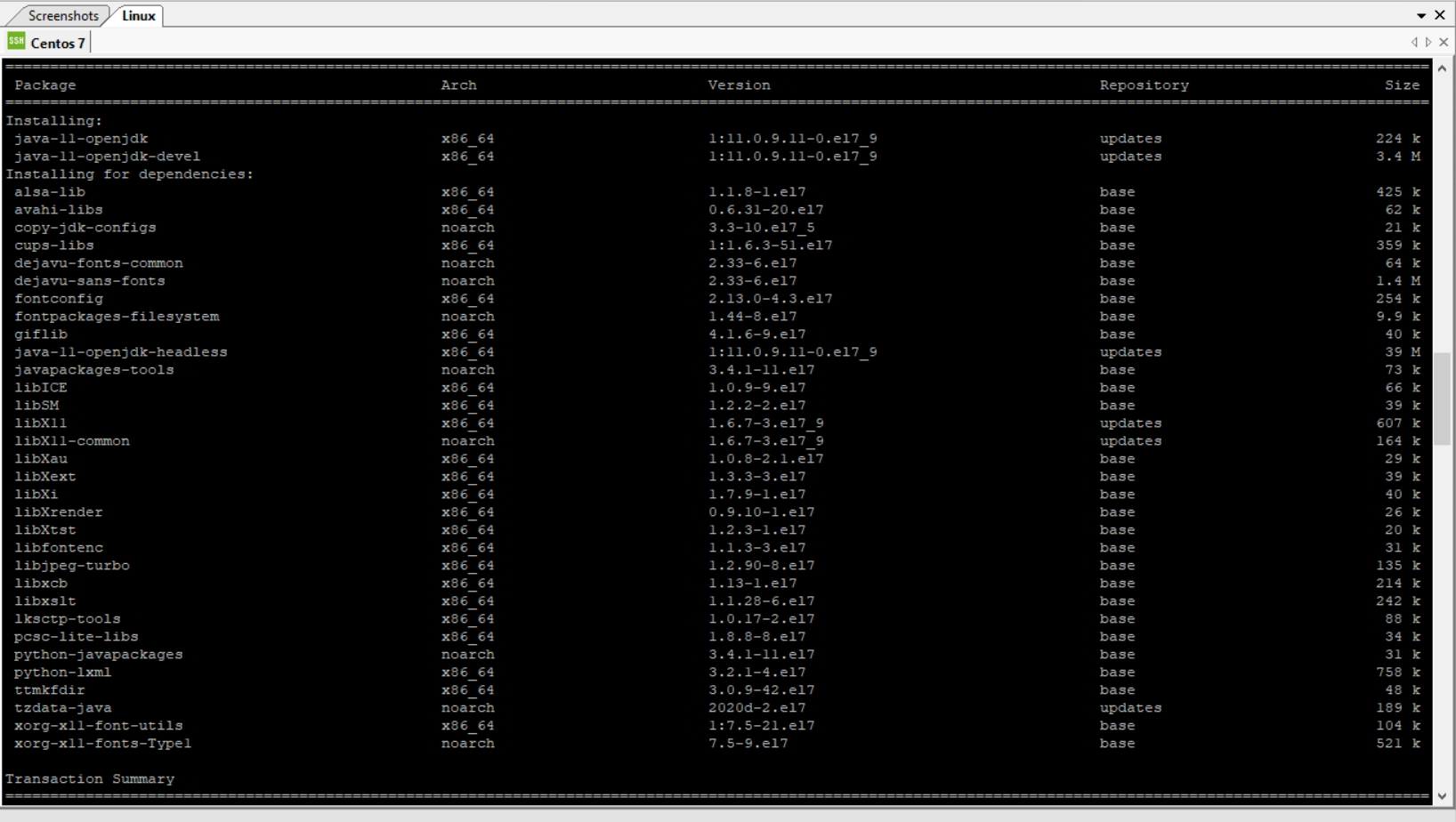
- #Install openjdk 11 on centos 7 how to#
- #Install openjdk 11 on centos 7 install#
- #Install openjdk 11 on centos 7 zip file#
#Install openjdk 11 on centos 7 install#
To install this version, run the following command.

#Install openjdk 11 on centos 7 zip file#
Extract the downloaded zip file to a directory. As you can see above, the version we want to install is: java-11-openjdk-devel.x8664 : OpenJDK Development Environment 11. For Windows, download the zip file for Windows 64-bit, i.e. OpenJDK is distributed in only zip or tar.gz file. Then scroll down a little bit to find the version 11.0.2. OpenJDK 64-Bit Server VM 18.9 (build 11.0. To download OpenJDK 11, you have to go to OpenJDK Archive download page. OpenJDK Runtime Environment 18.9 (build 11.0.1+13) However, here is a guide which is the second hit on Google for openjdk11 centos: curl -O Oracle offers installable packages for Linux. It is an open-source software which is consistently being improved by its user community. WildFly is a managed application runtime server and Java software platform used to provision Java applications and services. Java 11 LTS OpenJDK flavors are slated to receive support up to 2030. Introduction In this tutorial, our objective is to install WildFly on an unmanaged CentOS 7 server. It’s recommended to use Java LTS (long-term support) release as it will receive updates for the longest period.
#Install openjdk 11 on centos 7 how to#
And if you want to use openjdk11 now, you'll have to use either an unofficial repository or install the software by hand, what I'd recommend. This section explains how to install Azul Zulu builds of OpenJDK on RPM-based Linux distributions. At the time of writing this article, the latest LTS release is Java 11. In this article we are going to explain how to install OpenJDK in Linux distributions such as RHEL, CentOS, Fedora, Ubuntu, Debian, Mint, openSUSE & Arch Linux. The current default, Long-Term-Support (LTS) version is Java 11. You can also decide which version you want on your system by installing a specific version number.

Verify that Cassandra is running by typing: nodetool status. Install Java On CentOS You can install one or several Java packages on your machine. Start and enable the Cassandra service: sudo systemctl enable cassandra sudo systemctl start cassandra. Sooner or later you'll have to install software without a manager in any OS, so even if you're saying you're a noob, you'll have to learn that sooner or later. Once the repository is enabled, install the latest version of Apache Cassandra by typing: sudo yum install cassandra. I guess in CentOS (I am not that familiar with it tbh.) it's the same situation. For example, the OpenJDK 11 on Debian is still in buster ( testing) and sid ( unstable) and therefore not available in any stable branch. The reason, in short, is because someone has to maintain the packages and put these into the repositories your system is using and verify, that they run stable. The Docker Configuration Wizard communicates with your Docker installation through the Docker UNIX socket Instead, upgrade to the latest available versions This option specifies the name of Docker is a software package that creates containers for application development 8 OpenJDK Runtime Environment (build 11 8 OpenJDK.


 0 kommentar(er)
0 kommentar(er)
